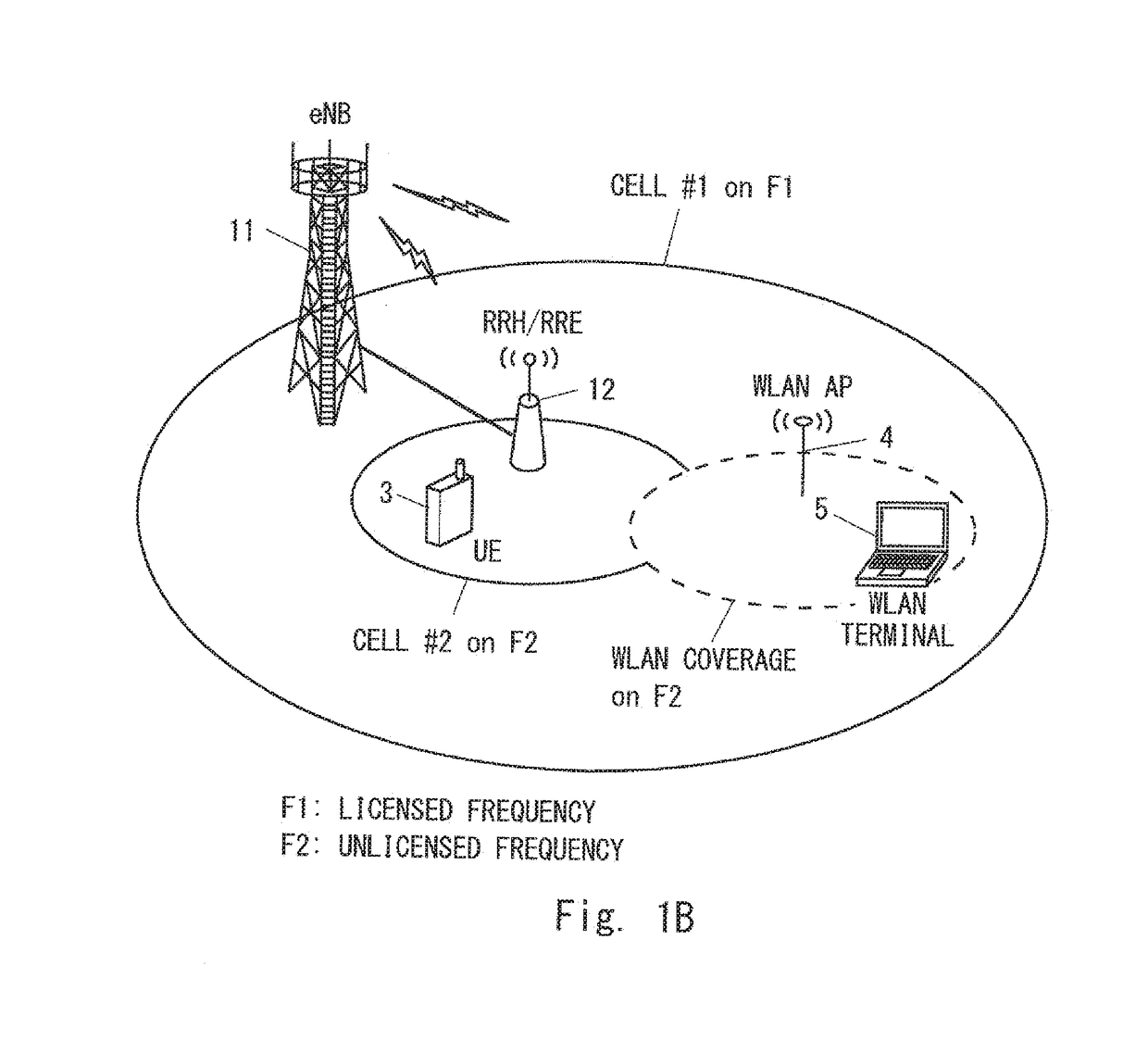Radio terminal, radio station, and method performed thereby
a radio terminal and radio station technology, applied in the field of radio communication system, can solve the problems of difficult to address the issue of a further increase in mobile traffic, difficult to implement sophisticated controls specified, and ue cannot execute transmission in accordance with ul gran
- Summary
- Abstract
- Description
- Claims
- Application Information
AI Technical Summary
Benefits of technology
Problems solved by technology
Method used
Image
Examples
first embodiment
[0068]First, some examples of Unlicensed LTE using an unlicensed frequency (Unlicensed frequency band, Unlicensed spectrum) according to a plurality of embodiments including this embodiment will be described. The Unlicensed LTE is also referred to as LTE-U or U-LTE and is hereinafter referred to as LTE-U. The unlicensed frequency includes a frequency that is used for, for example, radar systems and wireless LAN (WLAN or also referred to as WiFi) and includes frequencies other than licensed frequencies allocated only to any specific operators (i.e., service providers). The unlicensed frequency is, for example, but not limited to, 5 GHz band. Further, the plurality of embodiments described below can also be applied to a shared frequency (Shared frequency band, Shared spectrum) commonly allocated to a plurality of operators. In the following description, frequencies other than licensed frequencies are collectively referred to as the unlicensed frequency.
[0069]FIGS. 1A, 1B, and 2 are di...
second embodiment
[0090]This embodiment provides a specific example of the processing performed by the UE and the eNB. A configuration example of a radio communication system according to this embodiment is the same as the configuration examples shown in FIGS. 1A, 1B, and 2 described with regard to the first embodiment. In this embodiment, the UE 3 operates to: recognize, based on control information received from the eNB 1, whether UL LBT needs to be performed by the UE 3; perform UL transmission on the unlicensed frequency after UL LBT when UL LBT is needed; and perform UL transmission on the unlicensed frequency without performing UL LBT when UL LBT is not needed.
[0091]This control information, which the UE 3 receives from the eNB 1, includes information regarding necessity of UL LBT. For example, the information regarding necessity of UL LBT may explicitly indicate whether UL LBT needs to be performed. More specifically, the information regarding necessity of UL LBT may include at least one of th...
third embodiment
[0126]This embodiment provides a specific example of the processing performed by the UE and the eNB. Configuration examples of a radio communication system according to this embodiment are the same as those shown in FIGS. 1A, 1B, and 2 described with regard to the first embodiment. In this embodiment, the UE 3 operates to: recognize, based on control information received from the eNB 1, whether UL LBT needs to be performed by the UE 3; perform UL transmission on the unlicensed frequency after UL LBT when UL LBT is needed; and performs UL transmission on the unlicensed frequency without performing UL LBT when UL LBT is not needed.
[0127]This control information, which the UE 3 receives from the eNB 1, includes information regarding regulations for radio communication on the unlicensed frequency. The information regarding the regulations may indicate a first period in which it is allowed to transmit the UL signal without performing UL LBT. More specifically, the information regarding t...
PUM
 Login to View More
Login to View More Abstract
Description
Claims
Application Information
 Login to View More
Login to View More - R&D
- Intellectual Property
- Life Sciences
- Materials
- Tech Scout
- Unparalleled Data Quality
- Higher Quality Content
- 60% Fewer Hallucinations
Browse by: Latest US Patents, China's latest patents, Technical Efficacy Thesaurus, Application Domain, Technology Topic, Popular Technical Reports.
© 2025 PatSnap. All rights reserved.Legal|Privacy policy|Modern Slavery Act Transparency Statement|Sitemap|About US| Contact US: help@patsnap.com



